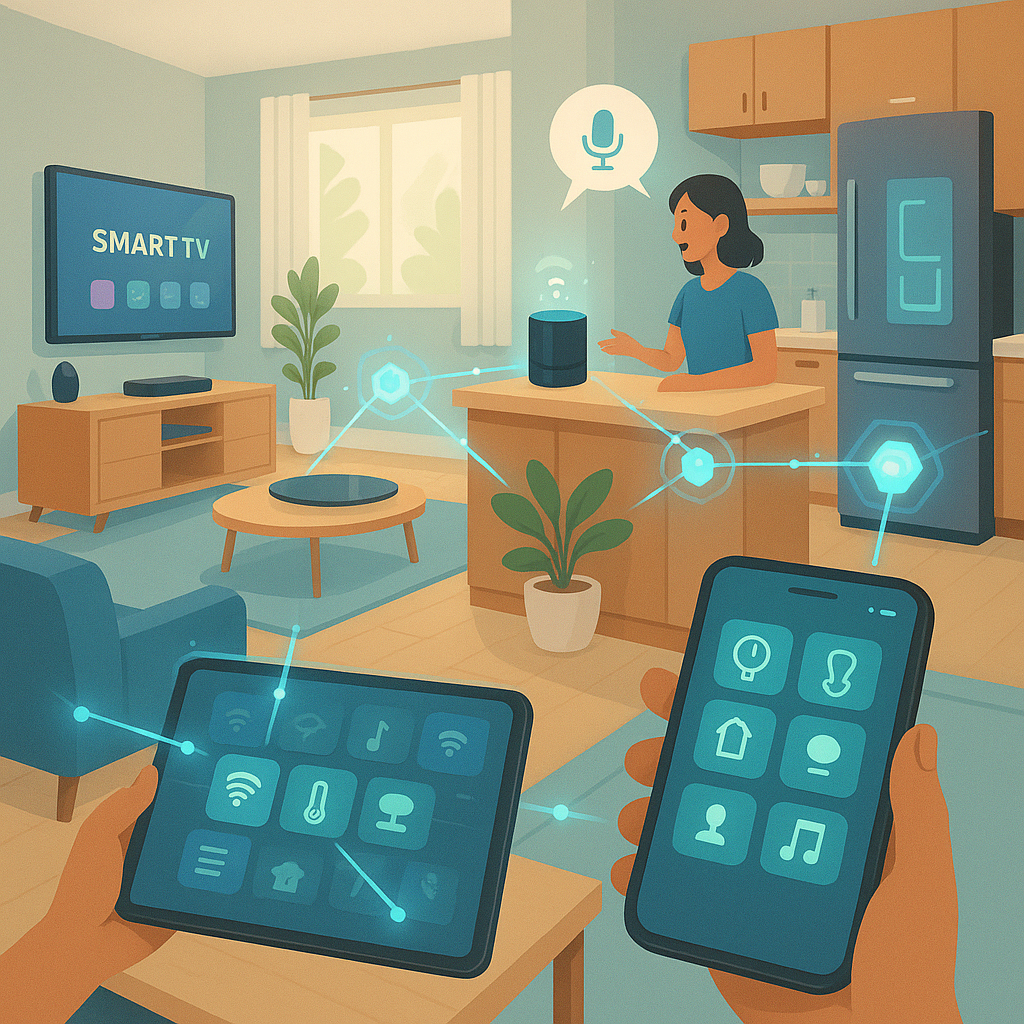Smart devices have made daily life easier than ever before. Voice-controlled lights and self-adjusting thermostats are becoming common in homes. But many people struggle to get their devices working together .
This blog shows you how to create a smooth smart home network without complex tech talk or frustration.
🌐 Begin with a Reliable Internet Connection
Why Wi-Fi Forms the Foundation of Your Smart Home
Your home Wi-Fi supports every smart device you install. A weak or unstable signal can cause your smart plugs bulbs, and cameras to stop working or respond .
Steps You Can Take:
- Get a modern router that supports dual-band or tri-band
- If you have a big house, choose a mesh Wi-Fi system to boost coverage
- Put your router in the middle of your home, not tucked away in a corner or closet
Handy tip: Give your 2.4 GHz and 5 GHz bands different Wi-Fi names to help devices connect the right way.
🧠 Is a Smart Hub Right for You?
What’s a Smart Hub and Do You Need One?
A smart hub works as a go-between for devices that can’t talk to each other. It helps gadgets from different makers work together .
You might not need a separate hub if your gadgets already work with Alexa, Google Assistant, or Apple HomeKit.
Popular Hub Options:
- Amazon Echo devices (built-in Alexa)
- Google Nest Hub
- Apple HomePod (for HomeKit)
- Samsung SmartThings
🔗 Pick Devices That Play Nice Together
Stay Within One Ecosystem
Using devices from the same platform (like all Alexa-compatible) will help you save time and avoid headaches during setup.
Look for products with these labels:
- “Works with Alexa”
- “Works with Google Assistant”
- “Apple HomeKit compatible”
Also, the latest smart gadgets are compatible with Matter, a fresh universal smart home protocol that makes sure different brands can link up without a hitch.
📲 Run Everything from a Single App
It’s no fun to juggle 5+ apps just to switch lights on and off. Make your setup simpler by running everything from one dashboard or app.
Apps to Check Out:
- Google Home
- Apple Home app
- Amazon Alexa app
- SmartThings (Samsung)
These apps let you group rooms set up scenes, and make your home run on its own without needing to be a tech whiz.
⚙️ Set Up Your Daily Habits to Run on Their Own
Smart homes really shine when they do things for you.
Ways to Make Your Home Work for You:
- Lights switch on as you enter
- Thermostat drops at bedtime
- Coffee begins brewing at 7:00 AM
- Security cameras activate when you exit the house
Most apps allow you to set up routines using basic rules like: “When [X] occurs, perform [Y]”
🔐 Remember to Protect Your Smart Home
Because everything connects online, it’s essential to keep your devices safe.
Simple Security Tips:
- Create strong passwords for your Wi-Fi and accounts
- Enable two-factor authentication (2FA) when possible
- Keep your router and device firmware up to date
- Set up a guest Wi-Fi network to keep your main devices private
🧪 Check and Fix Issues as Needed
After setting things up, test voice commands and check if automations work. If something doesn’t work:
- Turn your device or router off and on
- Check if it’s on the right Wi-Fi
- Try to connect again or set it up through the app
Don’t stress—hiccups are normal at first and easy to sort out.
🔄 Keep Your Smart Home Ready for the Future
Smart technology changes fast so plan ahead by:
- Getting devices that work with Matter (to ensure future compatibility)
- Updating your apps and devices
- Looking for new features or connections often
✅ To Sum It Up
Setting up smart devices at home doesn’t mean you need to be a tech genius. Make sure you have good Wi-Fi, devices that work together, and one app to control everything. Start small—maybe with lights or plugs—and add more over time.
Before long, your home will adjust the heat, play songs, and make coffee on its own. It’s not just neat — it’s a clever way to live.
